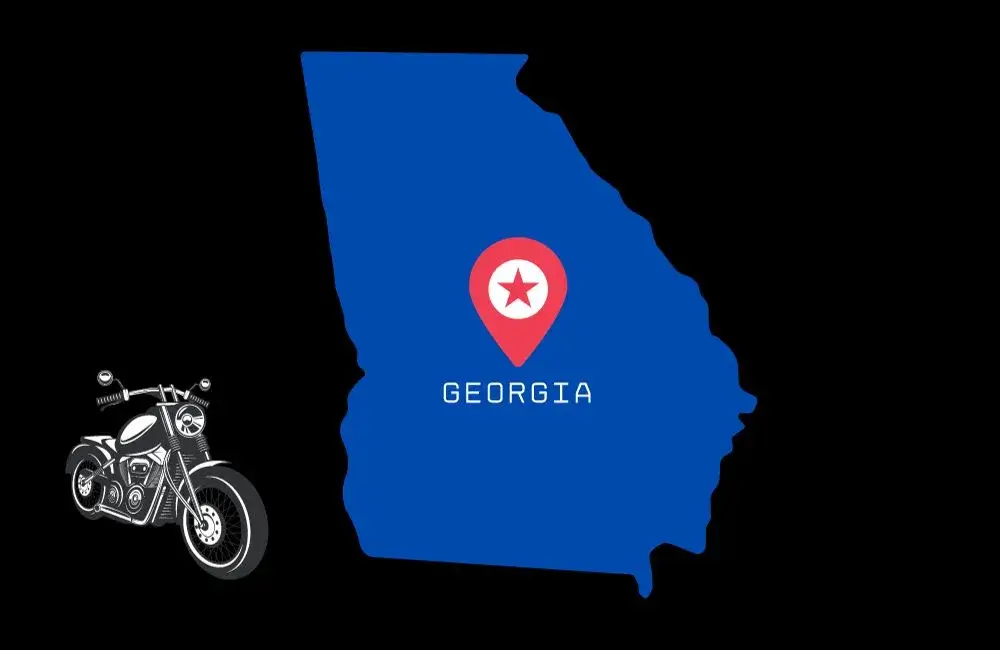Simple Law Guide
Ride Informed, Navigate Safely

Let’s dive into the legal scene of Georgia, where folks often find themselves wondering, ‘Does Georgia have a no-chase law?’ It’s a question that takes us into the complex world where the law meets the thrill of motorbike pursuits.
So, buckle up as we explore the specifics of the Georgia no chase law and unravel the details that riders and legal minds need to know in navigating this intriguing legal landscape.
The Georgia no-chase law restricts police pursuits, prioritizing public safety. Pursuits are allowed in specific circumstances outlined by the law to prevent endangering lives on the road. Familiarizing oneself with these regulations is essential for understanding law enforcement practices in the state.

The Georgia no chase law tells the police in Georgia what they have to do when they want to catch someone who is running away in a car or motorcycle.
The law does not say that the police cannot chase anyone, but it says that the police have to think about how important it is to catch the person and how dangerous it is for them, the people around them, and the person they are chasing. The law also says that the police can start, keep, or stop chasing someone.
According to the law in Georgia, a driver who does not stop or tries to get away from the police when they tell them to stop is breaking the law.
But the police officer has to know for sure that the person did or tried to do a very bad crime, like killing, robbing, stealing a car, or taking someone by force, and that the person running away can hurt other people.
The officer also has to ask a boss for permission before starting or keeping a chase. The law also lets different places in Georgia have their own rules that may be harder than the state law.
For example, the police in Atlanta have recently changed their no-chase rule to let officers chase people only for very bad crimes, and not for things like stealing, breaking small laws, driving badly, or not following the rules.
Read More: Does California Have A No Chase Law For Motorcycles
According to the Georgia Department of Public Safety, police are allowed to pursue motorcycles if the rider has committed a crime.
However, police officers must use caution when pursuing a motorcycle, as the high speeds and maneuverability of the bike can pose a danger to both the rider and other motorists on the road.
Georgia has its own set of rules regarding motorcycle pursuits:
The reason for the no-chase law is to make sure that the police do their job to catch bad people but also keep everyone safe.
The law knows that chasing someone fast can be risky and sometimes deadly and that there may be other and safer ways to catch someone who is running away, like blocking the road, using cameras, or sending helicopters.
The law also tries to lower the chance that the police or the state have to pay for any harm or damage caused by a chase.
The law does not stop officers from using their own choices and thinking to decide when a chase is needed and right, but it gives them some advice and rules to follow.
The law also does not stop the person who is chased from being punished for the first crime and for running away from the police.
Read More- Can Cops Chase Motorcycles: Unraveling The Rules
What Are Motorcycle No-Chase Laws? Motorcycle no-chase laws are regulations that guide law enforcement officers during pursuits. These laws strike a delicate balance between apprehending suspects and ensuring safety on the roads. When a motorcycle is involved, officers must consider the risks posed by high-speed chases.
Why Do We Need These Laws? The primary purpose of no-chase laws is to protect everyone involved. While apprehending criminals is crucial, it shouldn’t come at the expense of innocent lives. These laws encourage officers to explore safer alternatives to high-speed pursuits.
Read More- No Chase Law Florida
Navigating Georgia’s roads involves adherence to a set of rules designed to ensure safety and order. From general road regulations to specific laws governing motorcyclists, understanding the nuances is crucial. Here’s an in-depth exploration, including the helmet law, presented in bullet points:
Registration and Inspection:
Navigating Georgia’s roads requires a comprehensive understanding of general and motorcycle-specific regulations.
Whether it’s adhering to speed limits, wearing helmets, or practicing defensive riding, compliance ensures a safer and more enjoyable experience for all road users. Stay informed, stay safe, and enjoy the scenic beauty of Georgia’s diverse roadways.
Georgia does not have a statewide law explicitly prohibiting police pursuits, commonly referred to as a “no chase” law.
However, law enforcement agencies in the state often have their pursuit policies that dictate when and how high-speed chases are conducted. These policies can vary among different jurisdictions within Georgia.
To wrap it up, Georgia’s no-chase laws extend consistently to motorcycles, emphasizing safety. The state provides explicit guidelines for police pursuits, highlighting the importance of both riders and law enforcement understanding these rules. This ensures a delicate balance between public safety and effective law enforcement practices on Georgia’s roads.
1. What Exactly Are Motorcycle No-Chase Laws?
These laws provide guidelines for officers during pursuits, emphasizing safety alongside arrest needs.
2. How Do These Laws Impact Police Pursuits?
They encourage alternatives like surveillance and monitoring, reducing the risks associated with high-speed chases.
3. What’s Unique About Georgia’s Approach?
Georgia’s “Dead Red Law” and Atlanta’s no-chase policy demonstrate a commitment to safety.
4. How Can Motorcyclists Stay Informed?
Regularly check official state resources and stay updated on local policies.
reference: Georgia Code § 40-6-395 (2020)